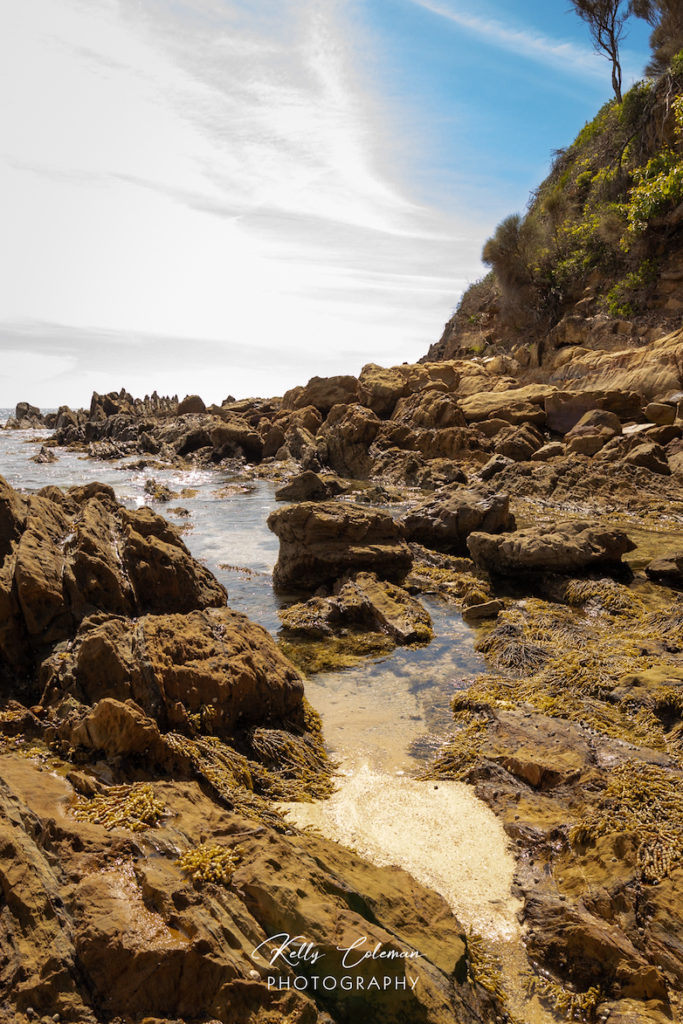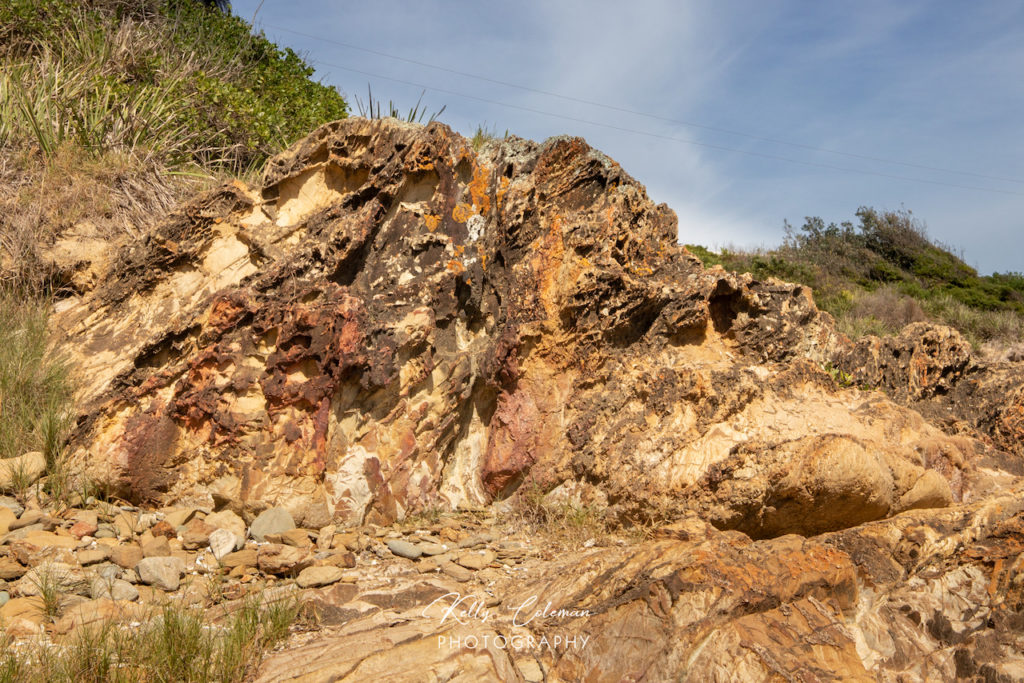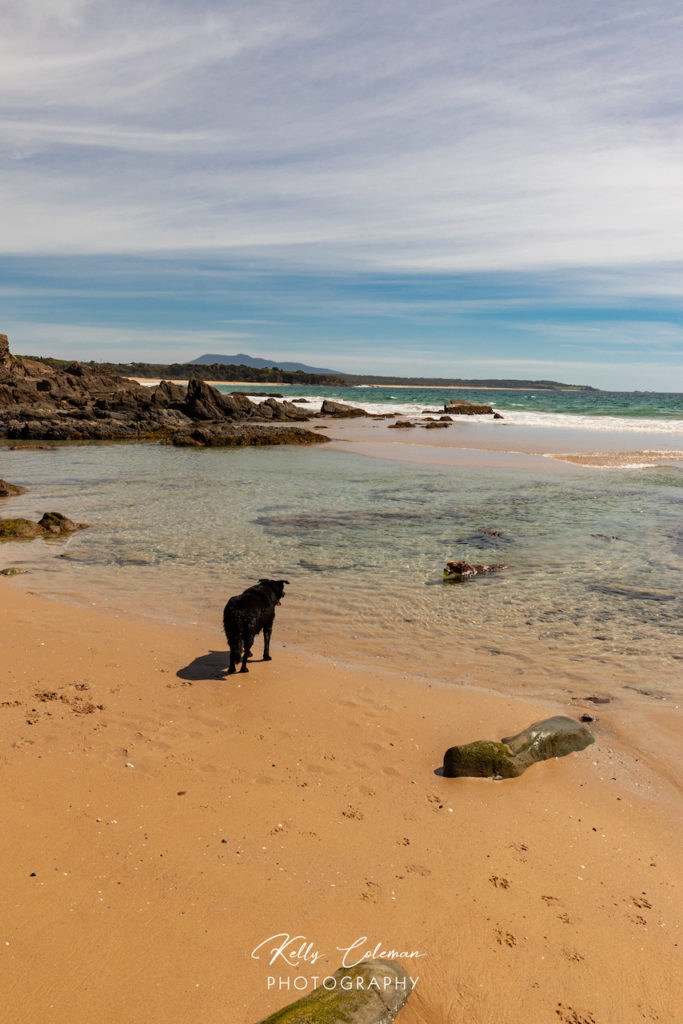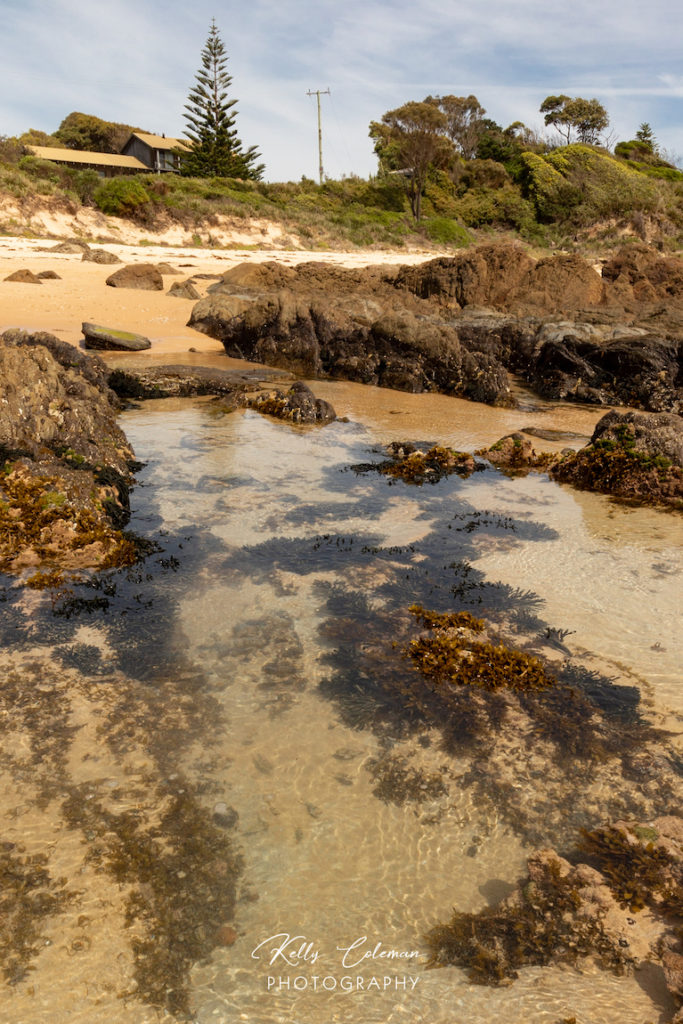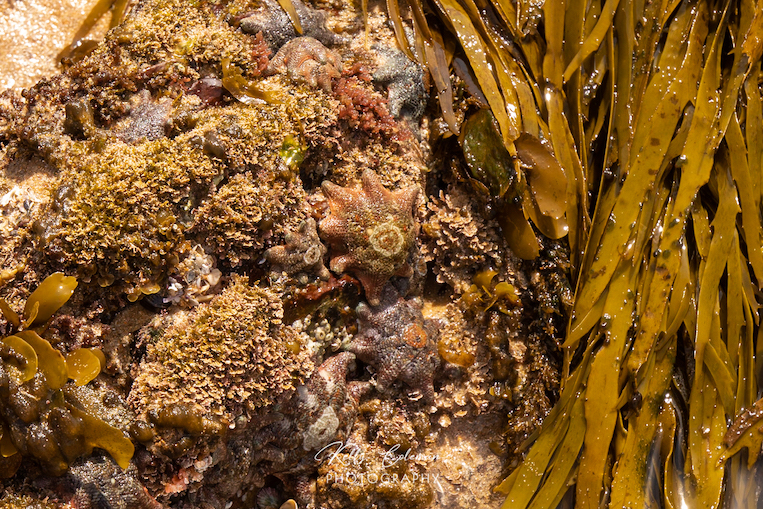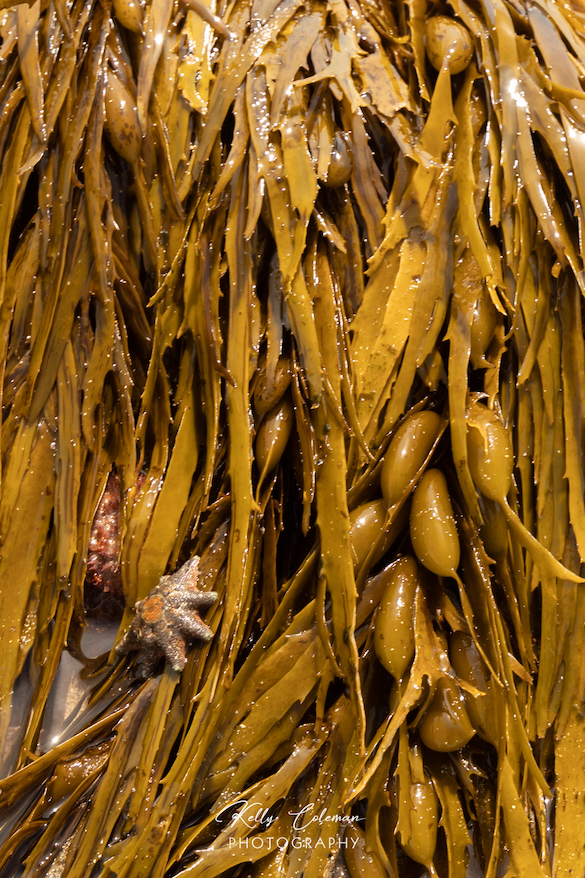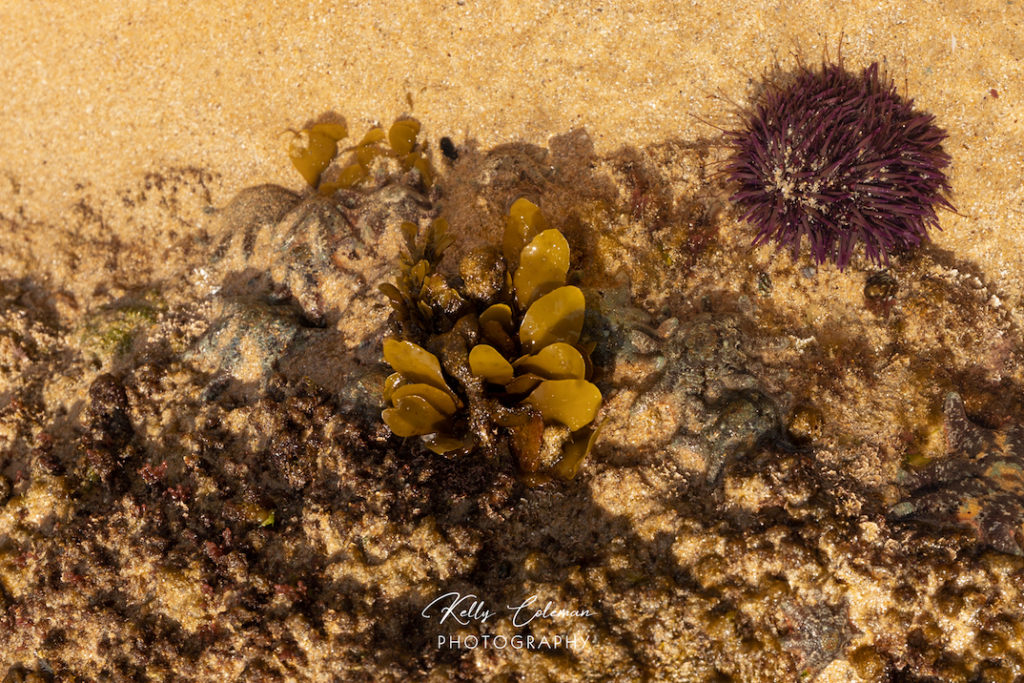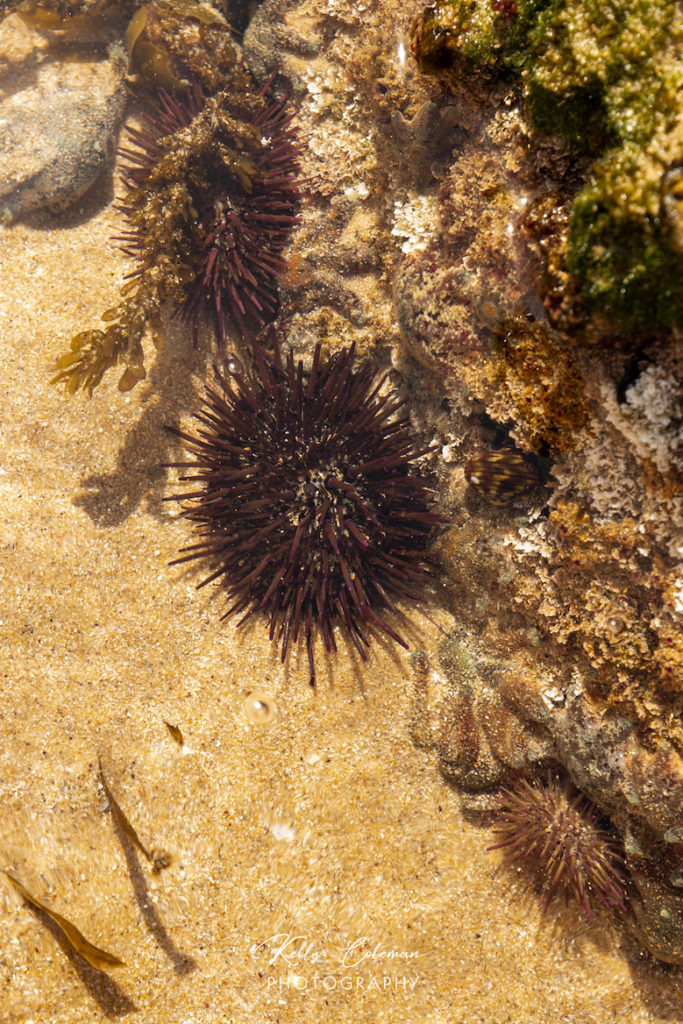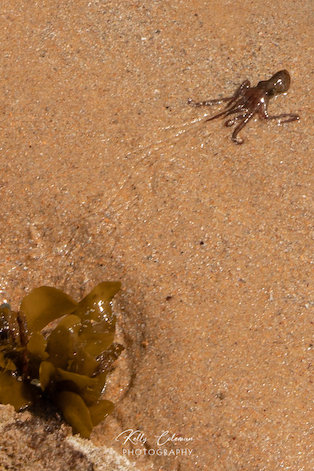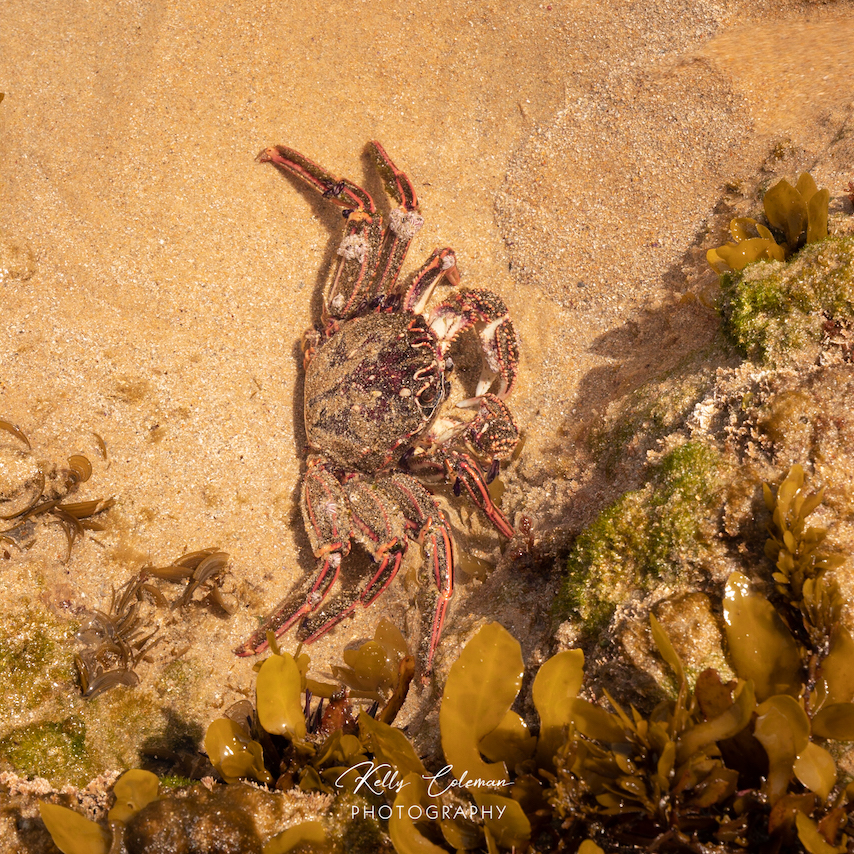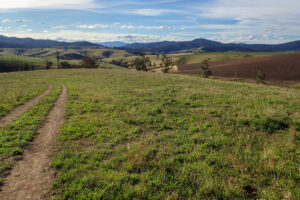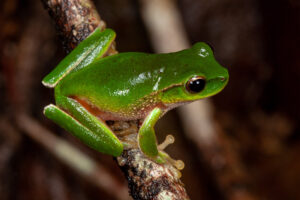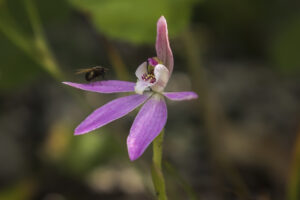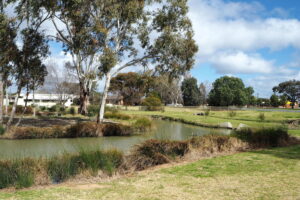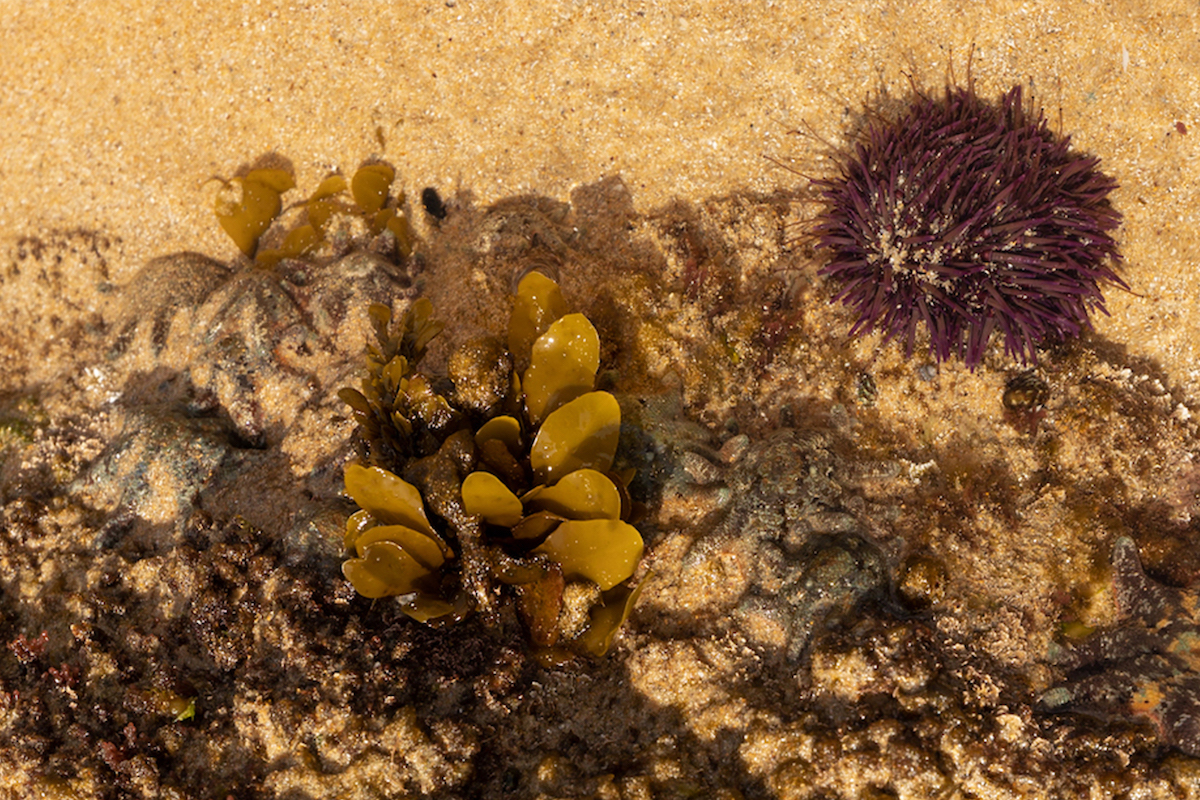
Life in the intertidal zone
The Sapphire Coast of NSW is a beautiful place to visit and spend time exploring. It is hard trying to find spots that are out-of-the way without tourists enjoying the views, lakes, mountains and beaches.
On a recent trip we managed to find one of these spots and enjoyed a bit of time playing and investigating the intertidal zone at low tide. The intertidal zone includes the area on shore from the low-tide to the high-tide levels. Different animals and plants can be found at different levels based on their ability to survive varying times out of the water and the heat that comes with that exposure.

The cliff and rocks surrounding the little bay were colourful in shades of yellow to dark red and brown. This is a historically volcanic region (you can see Mount Gulaga in the background above – an extinct volcano).
Draping over the intertidal rock were thick drapes of Neptune’s necklace seaweed imitating the flow of water as it flows off through the rock crevices.
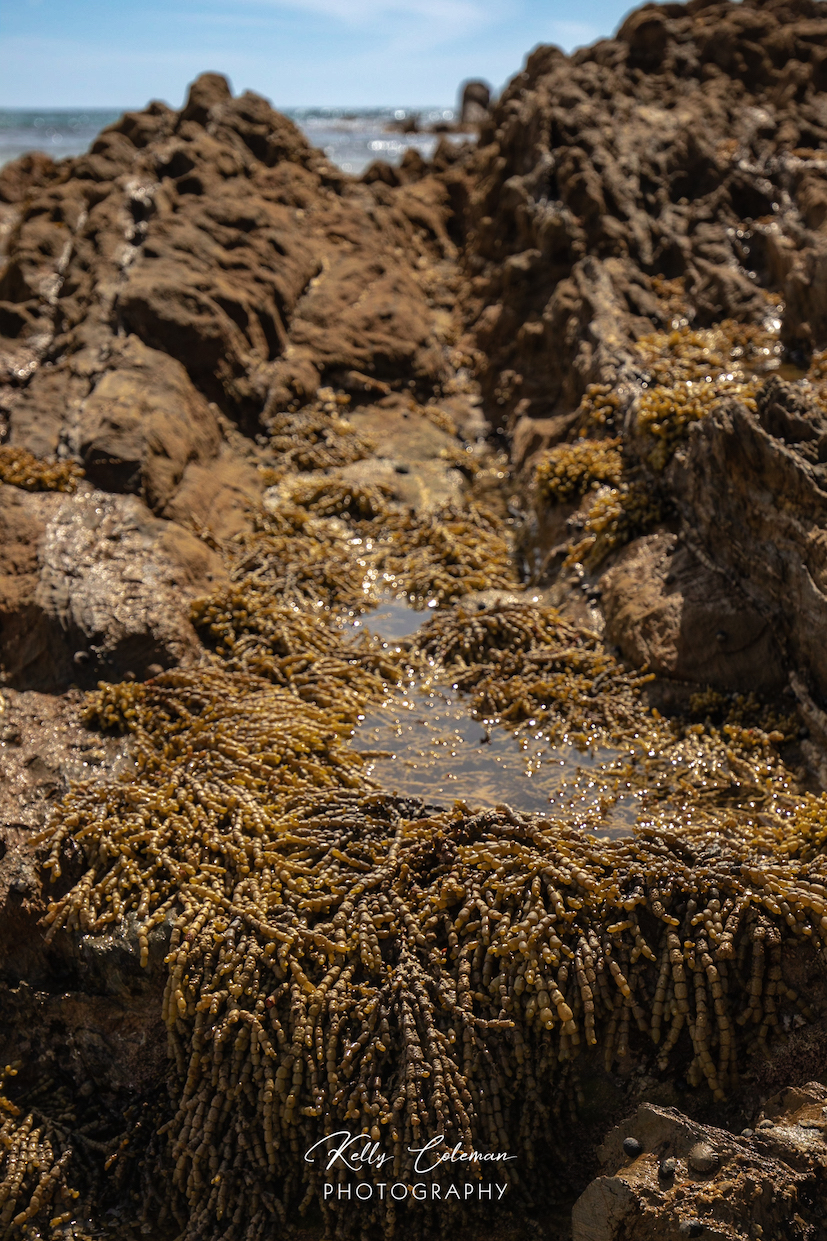
The uniqueness of this location was a deeper pool that was largely separated from the open ocean by a sand bank. Waves gently washed over the sand bank at times but many creatures were left exposed. This scenario allowed for a great opportunity to explore the edges of the rocks that still had water around them. Looking around this large rock pool brought up great memories of doing similar activities as a child.
The rocks located in the high-tide level were covered in an array of limpets, periwinkles, neuritis and siphon shells. How many different molluscs can you spot?
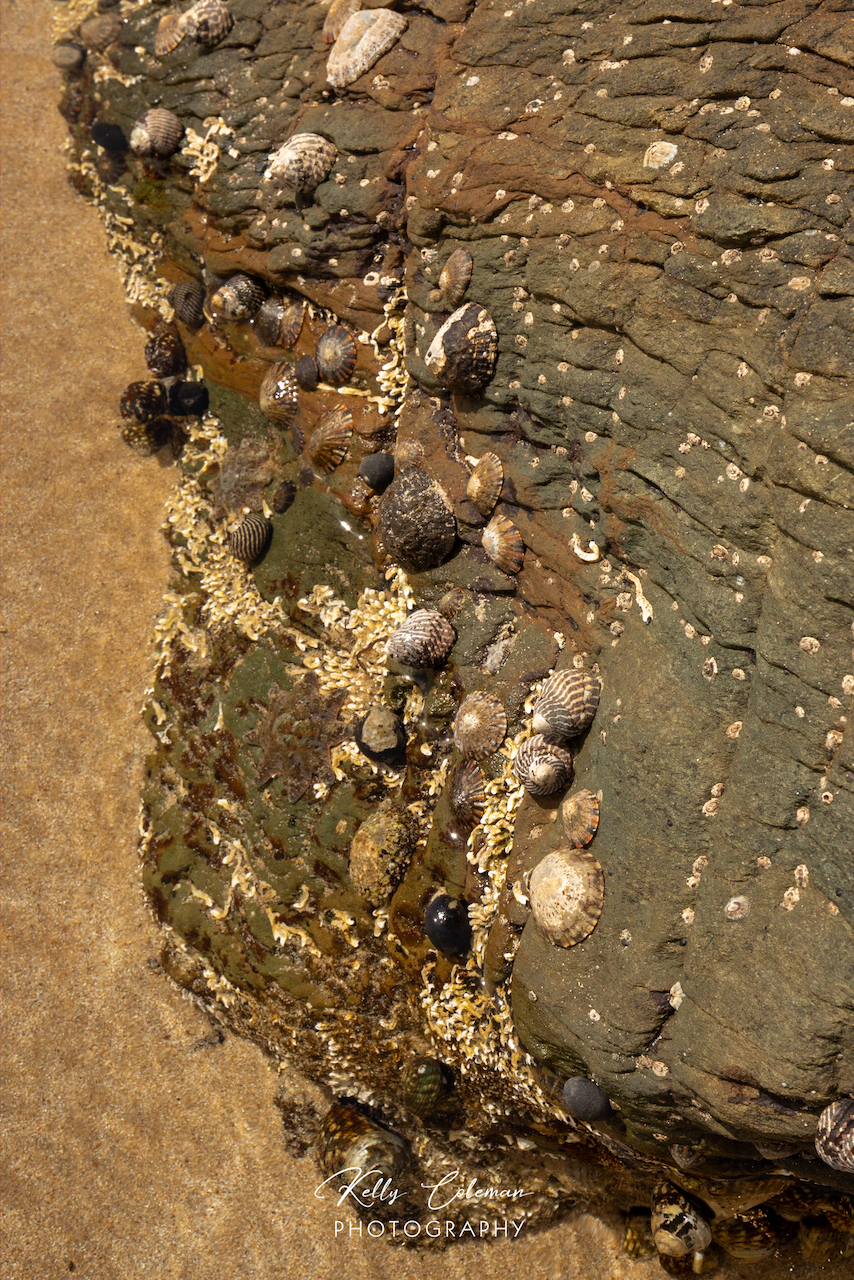
In the mid-tide level we found lots and lots of carpet or cushion sea stars. These stubby-legged echinoderms show a variety of colours that look similar to old rugs or carpets and are well camouflaged as they cling to rocks and kelp. These species have an interesting biology in that they are ‘viviparous’, meaning that they give birth to live young. The juveniles develop within the parent. How many see stars can you find in the following photos (click to enlarge them).
Up on the sand dunes we found a number of dried sea urchins, which was an indication of what we would find in the low-tide level. There were plenty of sea urchins surviving in the centimetres of water that only just covered them – with some not covered expect when the bigger waves washed up.
On the open sand bank there were a few critters trying to move about, these included rock crabs, a tiny octopus about 3cm long (including tentacles) and the most unique creature – a baby moray eel. At first the tail brought on initial thoughts of young sea snake, but this little fella made himself known as he tried to move to deeper water across the open wet sand. Upon closer inspection of the photos taken, it was definitely the head of a young moray eel – how cool is that!
The last critter to find clinging onto whatever water covered it, was a sizeable octopus measuring about 25cm in body size. As the water receded, its colour would change to a light grey-brown and as a wash of water covered it the colour changed to a deep burgundy. This camouflage feature was fascinating to watch on land.
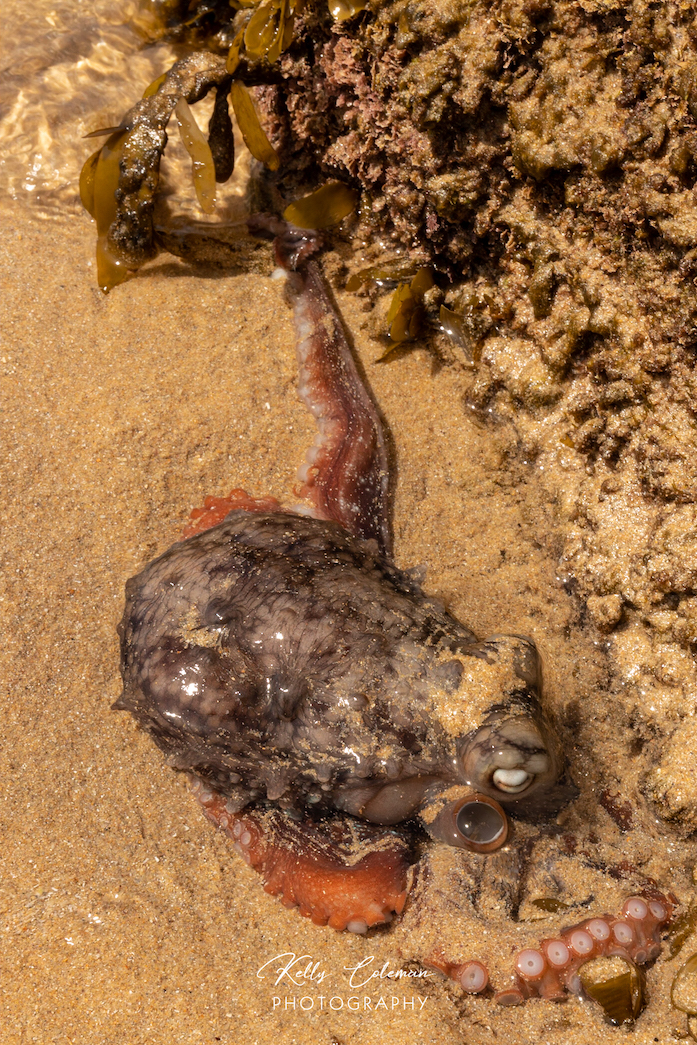
This rock pool was a fascinating to wander about and photograph the varying plants and animals that could be found. The seaweed, algae and larger kelp provided a great soft backdrop to the molluscs and sea stars that encrusted the rocks of this little bay.
This is a magical location that we will return to in the future as there is so much more to explore.
Photos and story by Kelly Coleman

